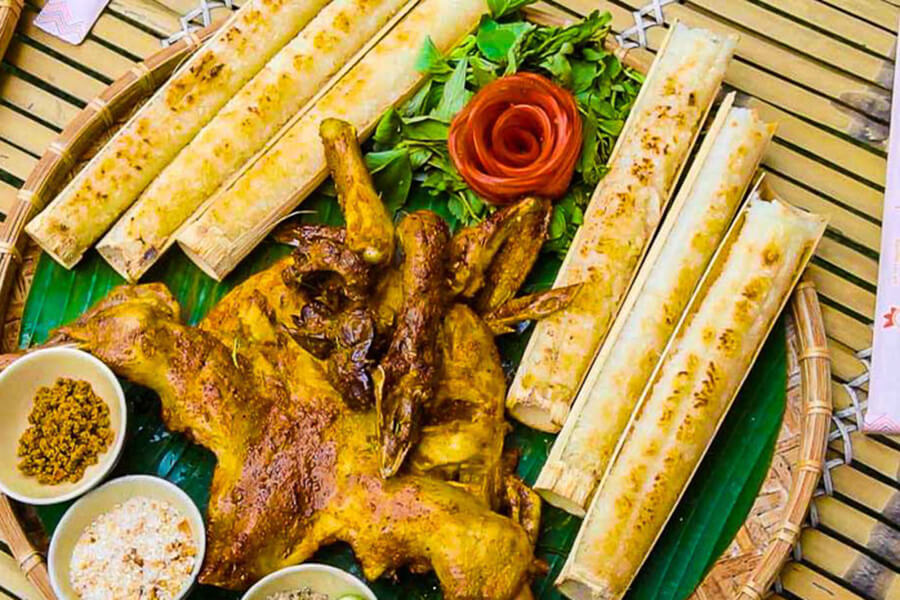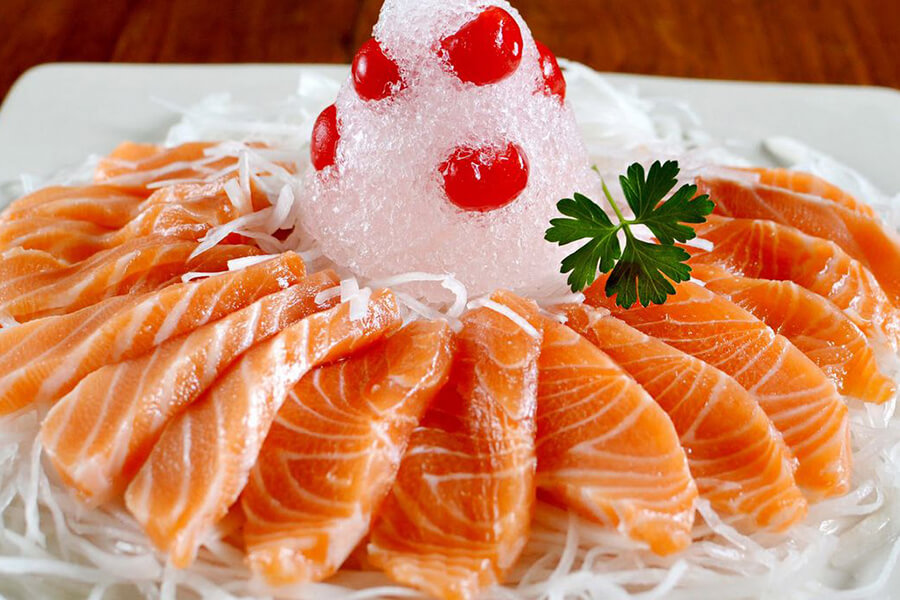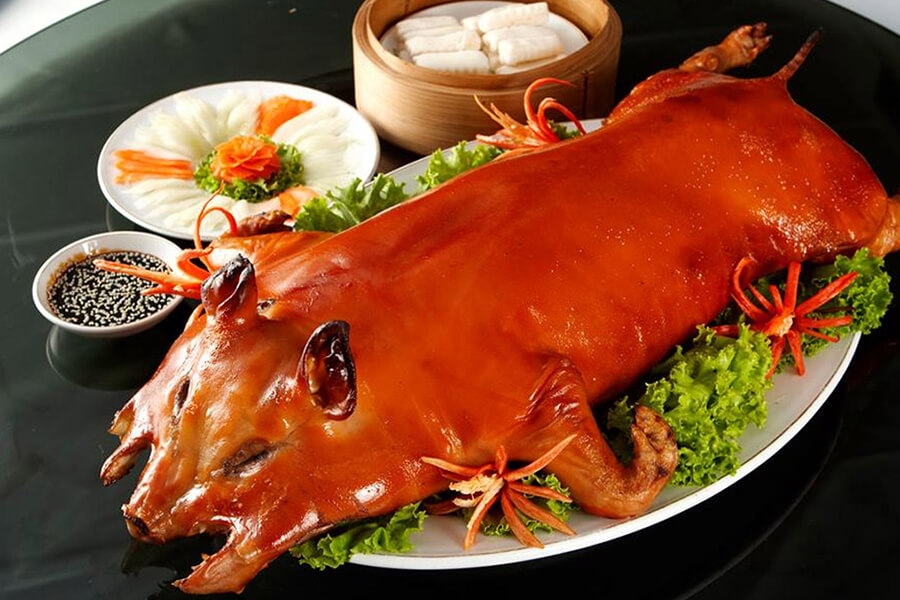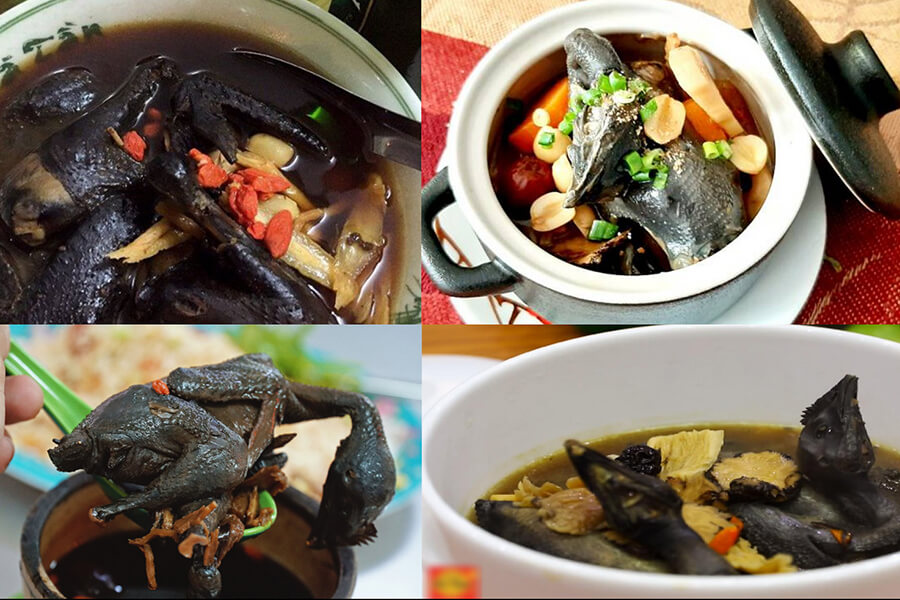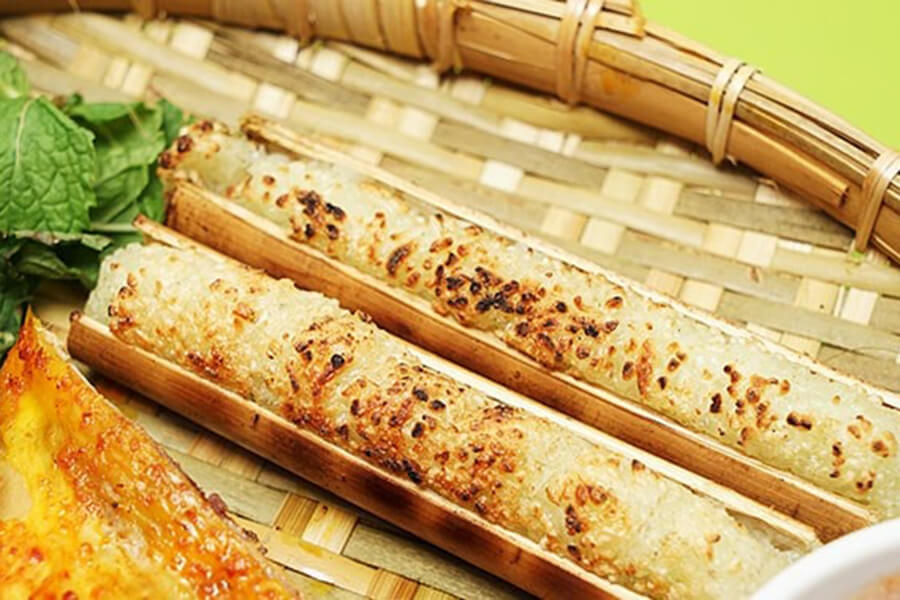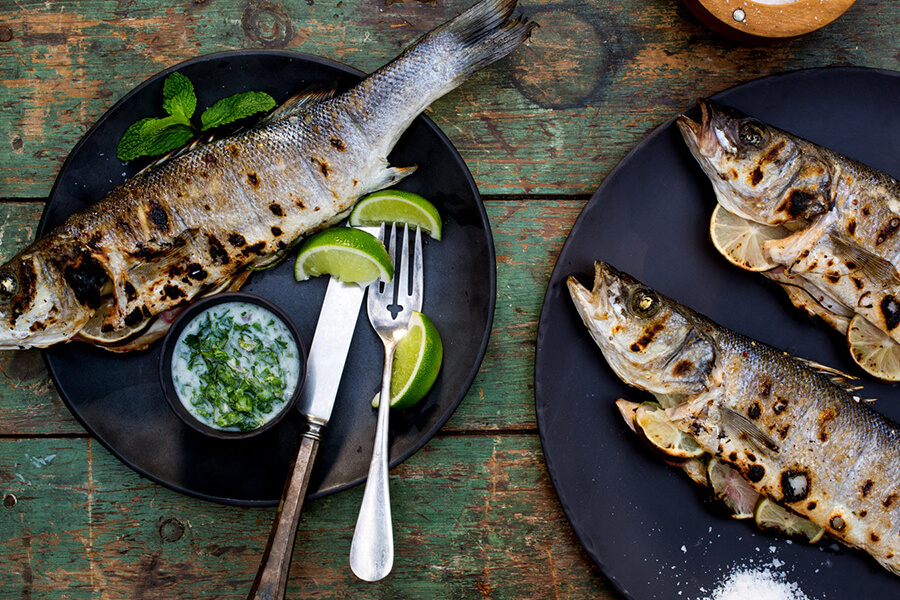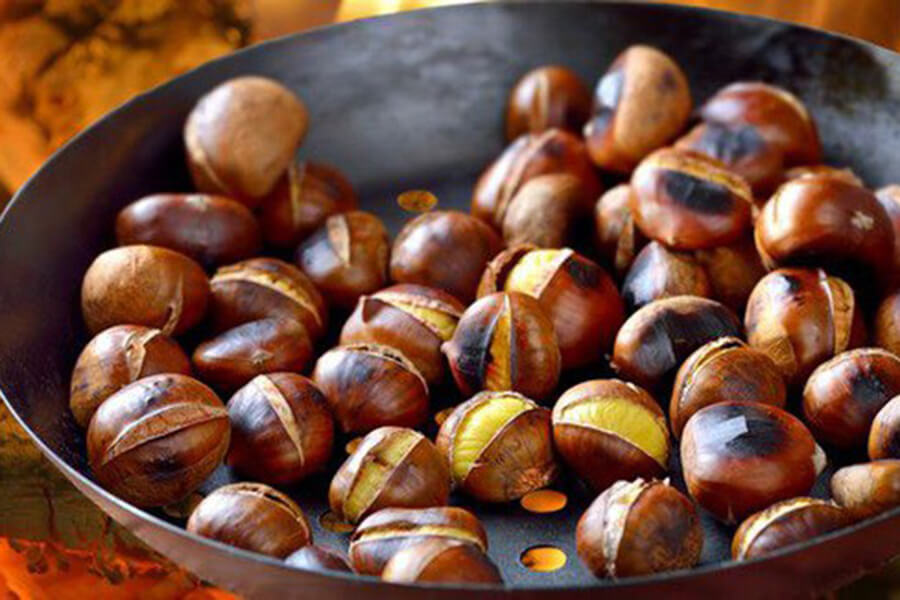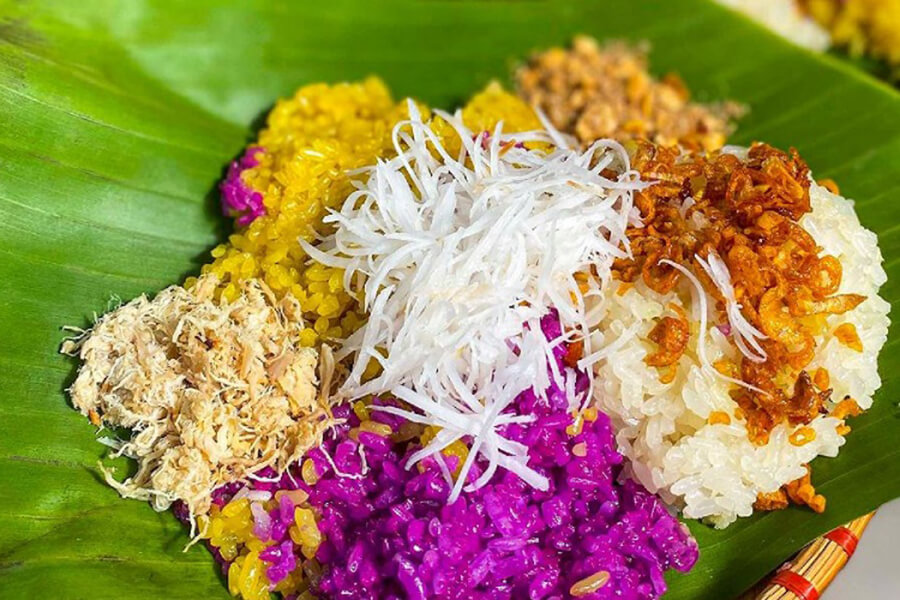No products in the cart.
HANOI SAPA TOURS
Top 10 Special Sapa Dishes That Are a Must-Try
When it comes to Sapa, it’s not just the majestic Northwest mountainous landscapes and breathtaking views that come to mind, but also the unique local cuisine. When you visit Sapa, it’s not just about taking pictures and enjoying the beautiful scenery; it’s also about savoring the delicious dishes that this place has to offer. So, which special dishes should you definitely try? hanoi tour is here to reveal the top 10 specialty dishes in Sapa that you must try when visiting. Be sure to take note and plan your trip to Sapa to taste them all.
Sapa Salmon – A Must-Try Specialty Dish in Sapa
Right at the foot of the “roof of Indochina,” you’ll find the ideal home for the famous Sapa salmon. Sapa salmon is raised through a strict process to ensure its nutritional quality. The year-round cool climate in Sapa, including cold winters with snow, results in the quality and color of the salmon being on par with imported salmon.
The Sapa salmon meat is firm, tender, without fat, and has a fresh pink color, making it soft and delicious. Virtually every restaurant in Sapa serves this dish, making it easy for diners to enjoy. To enhance the taste, it’s recommended to try it at specialty salmon restaurants. Salmon can be prepared in various ways, including sashimi, fried, steamed, in curry, but the most outstanding dishes are salmon hotpot, salmon salad, and grilled salmon.
Thắng Cố – A Must-Try Specialty Dish in Sapa
Thắng cố is known as the traditional dish of the H’Mong people. It’s a distinctive dish found only in the Northwest region. To fully appreciate this dish, you must try it here. Thắng cố is prepared quite simply, combining various organs such as the heart, liver, intestines, and lungs of a horse, known as “lục phủ ngũ tạng,” cooked with horse bones and intestines.
After preparing and cleaning the organs, they are marinated with spices such as herbs, black cardamom, and star anise. Approximately 12 types of spices are combined to create a harmonious flavor. Thắng cố is cooked for about an hour, then simmered over a low fire. It becomes tender, richly flavored, and aromatic. When enjoying Thắng cố, it’s recommended to pair it with highland wine to savor the spicy and tingling taste on your tongue and appreciate the enchanting landscapes of the Northwest mountains.
Sapa Free-Range Pig – A Must-Try Specialty Dish in Sapa
Sapa’s free-range pig, also known as “lợn cắp nách,” is raised naturally. When they reach around 10kg, these pigs are carried under the armpit or led to the market for sale, hence the name “lợn cắp nách” (pig carried under the armpit). Being raised freely, these pigs have firm, fragrant, and clean meat, ensuring food safety.
Sapa’s free-range pigs are transformed into a variety of enticing and diverse dishes. You can enjoy roast pork, grilled pork, and boiled pork, among others. What makes these dishes truly special is the local spices and unique cooking methods that create these delicious and distinctive flavors. The pork is often paired with cat apple wine, combining the sweetness of the meat with the spiciness of the wine, providing an unforgettable culinary experience.
Sapa Black Chicken – A Must-Try Specialty Dish in Sapa
Black chicken, or “gà ác,” is small, weighing around 1.2kg, and is entirely black from head to toe. These chickens are raised freely and fed with wild vegetables, corn, and rice, resulting in firm meat with crispy bones. Sapa’s black chicken is a highly nutritious specialty that diners appreciate.
Black chicken can be prepared in various ways, including frying, stir-frying with lemongrass, steaming, boiling, grilling with honey, and cooking with traditional herbs. For black chicken grilled with honey, the honey used is not from conventional sources; it’s wild honey obtained directly from nature. The marinated chicken is then grilled over red-hot coals. Once the chicken is cooked, it exudes a fragrant and sweet aroma, spreading throughout the dish. Visiting Sapa and not trying this dish would be a significant oversight for any traveler.
Shan Lùng Wine – A Must-Try Specialty Dish in Sapa
Shan Lùng wine is a long-standing Sapa specialty. The region’s high elevation and unique climate contribute to the distinctive characteristics of this wine. The winemaking process is similar to other rice wines but is distinguished by the water quality, altitude, and local secrets and experience.
Shan Lùng wine is made from glutinous rice mixed with a bit of medicinal herbs and then brewed like regular rice wine. What sets it apart is the quality of water and fermentation. After the rice grains are cooked, the rice is cooled, and yeast is added to it. When the rice has fermented and gained the desired aroma, pure mountain spring water is poured in, and the wine is distilled. To enjoy Shan Lùng wine properly, you should light a match, and when the wine glass is burning with a beautiful blue flame, you should take a sip. The wine is tingling, sweet on the tip of your tongue, and has a unique scent and aroma that’s hard to resist.
Sapa Buffalo Meat Roasted Over an Open Flame – A Must-Try Specialty Dish in Sapa
Buffalo meat roasted over an open flame in the Northwest is a famous specialty in Sapa. If you visit Sapa and don’t taste this dish, you’re missing out. Preparing this dish involves selecting high-quality ingredients and meticulous marination.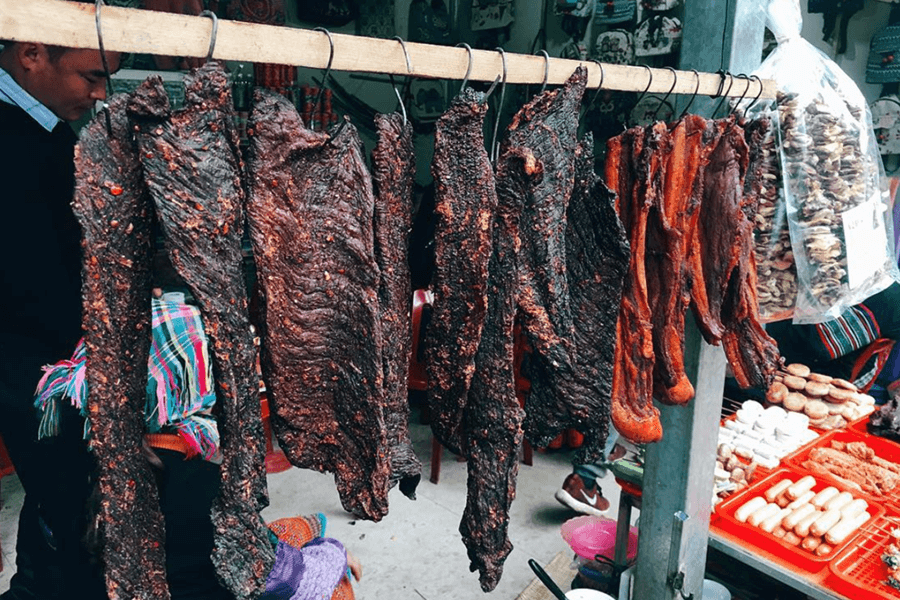
Buffalo meat roasted over an open flame is both sweet and flavorful. The meat has a characteristic taste from the unique spices such as “mắc khén,” a wild pepper, combined with the smokiness from long-term smoking. All of these elements make the buffalo meat roasted over an open flame an appealing and irresistible dish. Pairing it with Shan Lùng wine is the perfect combination that captures the hearts of diners.
Bamboo Sticky Rice – A Must-Try Specialty Dish in Sapa
A trip to Sapa would be incomplete without trying bamboo sticky rice, a beloved local specialty. “Lam” in the local dialect means cooking something until it’s done with bamboo tubes. Bamboo tubes must be made from fresh bamboo that is thin, clear, and clean. Bamboo sticky rice is made from glutinous rice, fragrant, and aromatic ingredients, and it’s considered a unique and delicious dish, as well as safe for health.
To prepare bamboo sticky rice, glutinous rice is soaked for 12 hours, and then natural colors are added and soaked for another 3 hours before cooking. Bamboo sticky rice is made with great care and precision to create a dish that’s both sticky and delicious, with just the right colors. Once the sticky rice is cooked, it’s removed from the bamboo tubes, revealing the beautiful seven colors. Bamboo sticky rice is often served with salt, sesame salt, grilled chicken, smoked pork, or dried beef.
Grilled Stream Fish – A Must-Try Specialty Dish in Sapa
Grilled stream fish is beloved by many diners for being a simple yet tantalizing dish. The fish in Sapa’s streams has a distinctive flavor that sets it apart from fish in other regions. Sapa’s stream fish may not be large like those in ponds or lakes, but they have firm, bone-rich, yet tender, non-fishy meat.
Due to the fish’s characteristics, it is typically grilled until crispy so that both the bones and meat can be consumed. It is not cooked in a sour soup or stewed, unlike other types of fish. Fish caught from the streams are grilled right next to the water, either for long-term consumption or to be sold to restaurants in town. The fish’s head is plump and fatty, the scales thin and crispy, and the meat inside is fragrant and sweet, allowing you to chew even the fish bones crisply. Dip the fish in a tasty fish sauce mixed with lime and chili, and you’ll have an exquisite culinary experience.
Sapa Wild Hazelnuts – A Must-Try Specialty Dish in Sapa
Sapa wild hazelnuts are a specialty of the Northwest mountainous region. You can easily find vendors selling various grilled items such as corn, sweet potatoes, taro, beef rolls with betel leaf, grilled meat, eggs, stream fish, and more on the streets. However, what stands out among these offerings is the aromatic grilled wild hazelnuts.
Sapa’s wild hazelnuts offer a unique, naturally fragrant flavor that captures the essence of the highland region. These hazelnuts are not very large but are extremely rich, sweet, with a dark brown, slightly shiny outer shell that feels hard to the touch. The first sensation diners experience when savoring these hazelnuts is their soft, chewy, and richly flavored nature, making them incredibly enticing. Strolling through Sapa while enjoying hot hazelnuts is an experience you won’t want to miss.
Seven-Color Sticky Rice – A Must-Try Specialty Dish in Sapa
Seven-color sticky rice is one of Sapa’s age-old specialty dishes. As the name suggests, this dish includes seven colors: red, purple, seaweed green, ginger green, brown, yellow, and traditional white. All the colors are created from various leaves, tubers, and fruits found in nature, making the sticky rice both uniquely flavorful and safe for your health.
To make delicious seven-color sticky rice, it’s essential to use good-quality rice. The rice used is long-grain glutinous rice, soaked for 12 hours, then left to absorb natural colors for another 3 hours before being cooked. Seven-color sticky rice is carefully prepared and meticulously made to ensure its stickiness, deliciousness, and the accurate representation of the seven colors. Once the sticky rice is cooked, it is arranged on a plate in the seven colors as its name suggests, giving it an attractive appearance. Seven-color sticky rice is typically served with salt, sesame salt, grilled chicken, smoked pork, or dried beef.
These are the top 10 specialty dishes in Sapa that you must try during your visit. Each dish is a culinary delight with its own unique flavors and characteristics, allowing you to savor the essence of this beautiful region in every bite. Don’t forget to explore and enjoy these delicacies on your next trip to Sapa.

